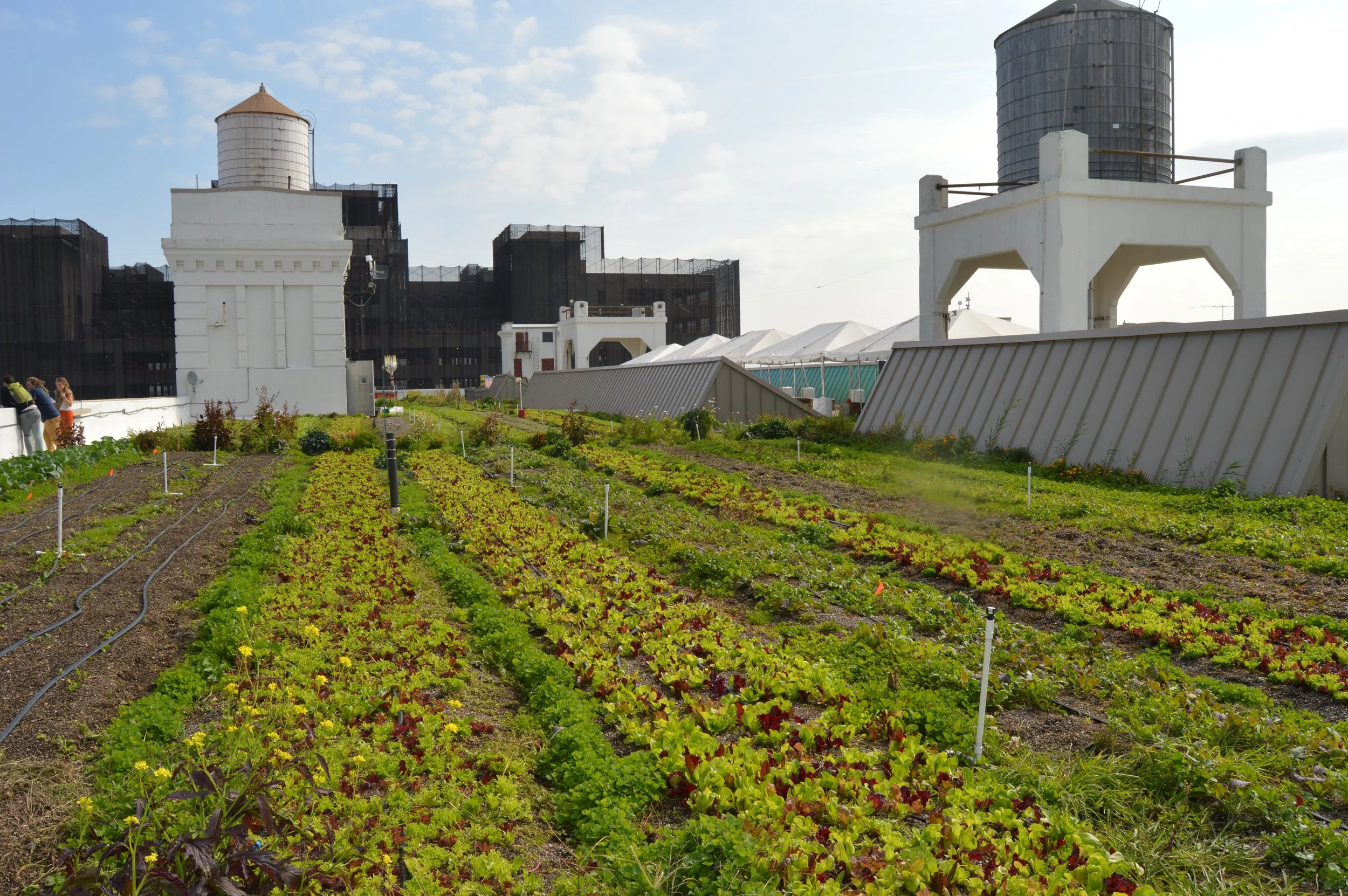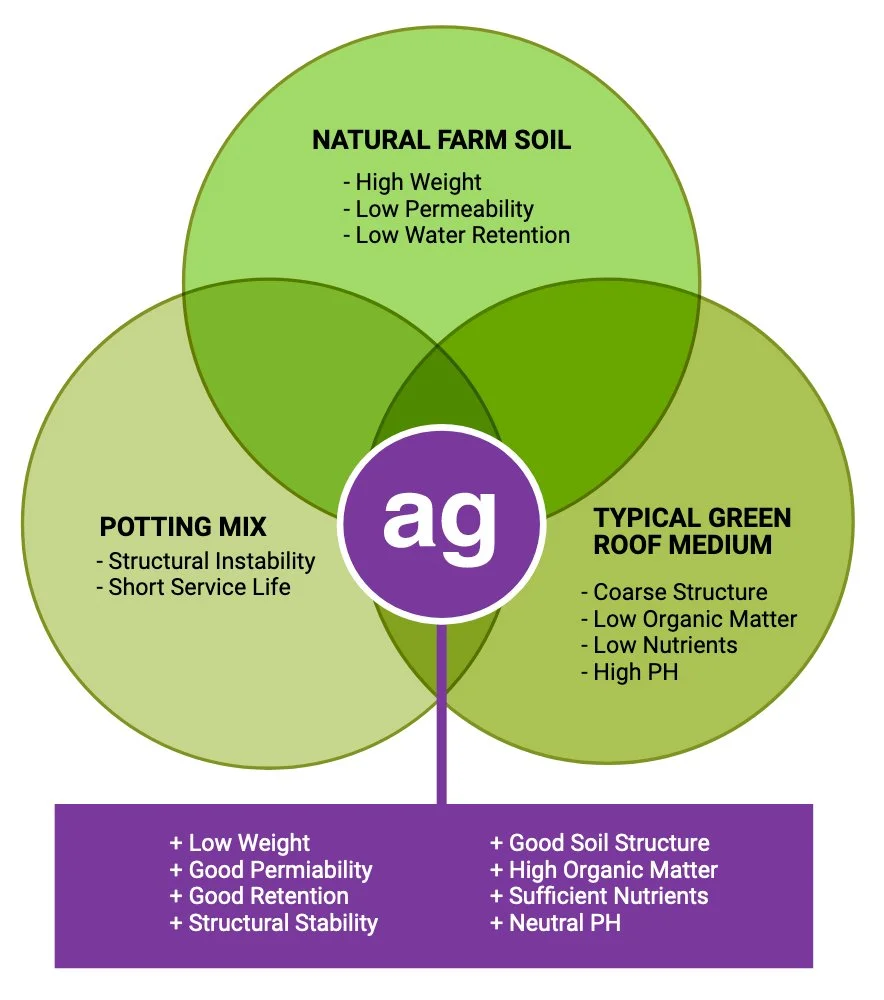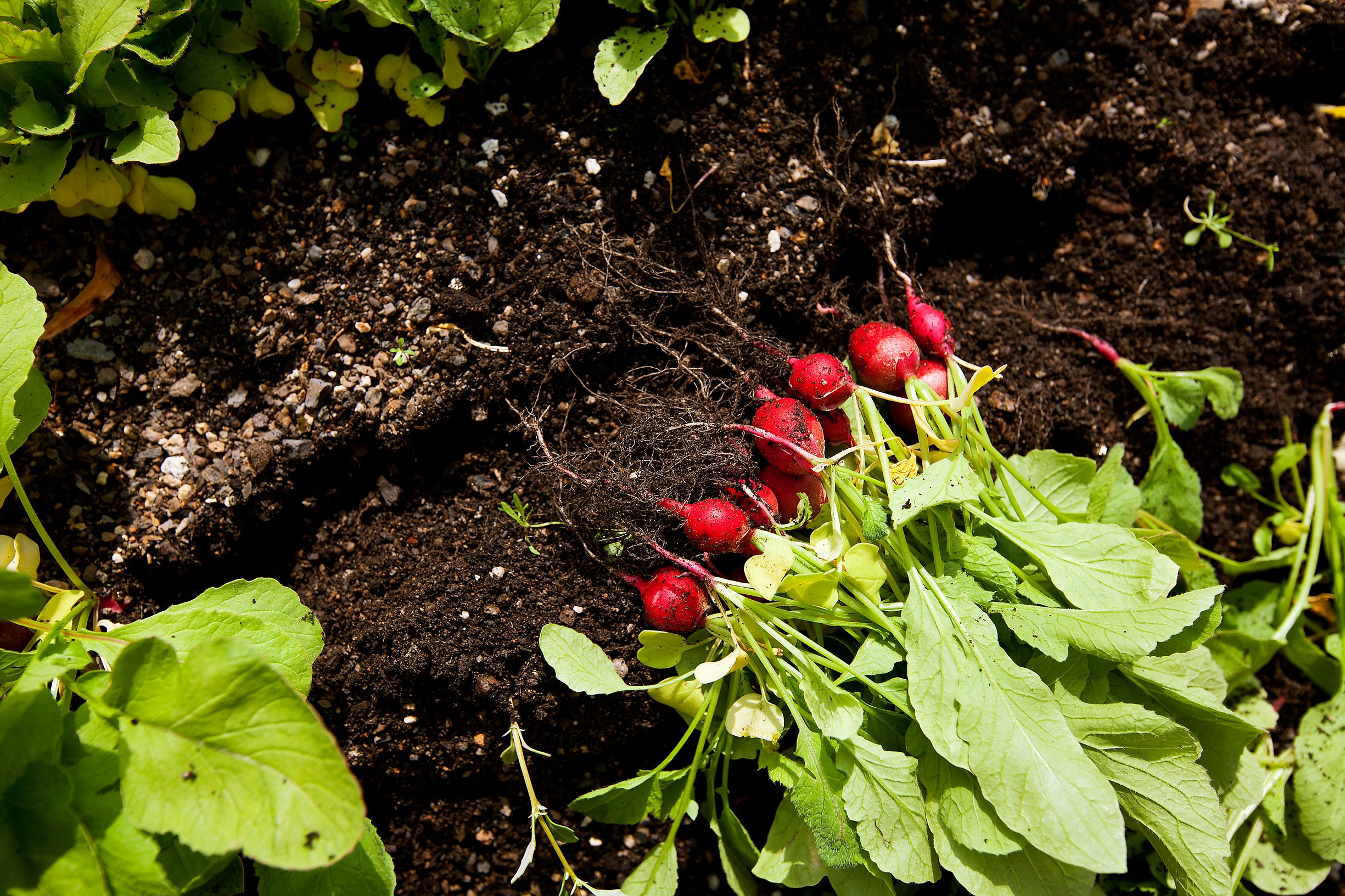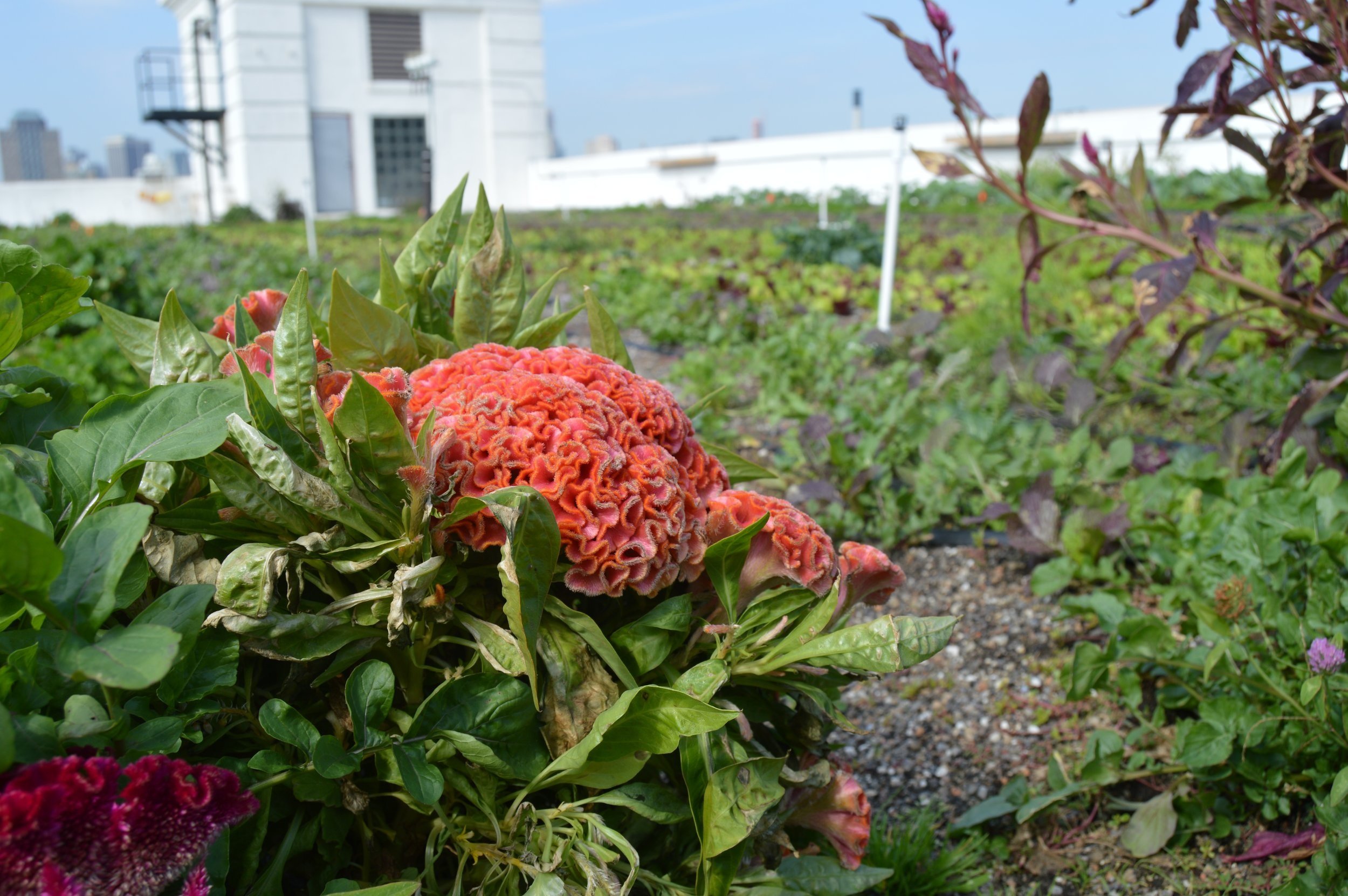Picking the Right Green Roof Media for Urban Agriculture
Advertisement
Brooklyn Grange Farm at the Navy Yard. Photo: rooftlite
Urban agriculture is sure to be a continuing trend as cities look for sustainable solutions to increase access to healthy, fresh produce and reduce climate impacts. A rooftop farm can truly transform a neighborhood, but it’s a complex project that requires a lot of know-how to make it work.
Rooftop farms are unique green roof projects. They are crossover designs that combine the features of a farm with the features of an intensive green roof. With the distinctive environment of a rooftop, the planning for an urban farm must include a variety of considerations, including protection of the building below, an adequate green roof system, and irrigation.
One of the most critical parts of a successful rooftop farm is soil/growing media specifically designed to meet food production requirements. So what does a good soil for rooftop farming do? It supports agricultural production by mimicking a natural soil profile. The right soil provides structural stability, which prevents it from breaking down and extends its life. It also provides sufficient nutrients for crops, ensuring long-lasting success.
Fresh produce picked from rooflite soil on a rooftop farm in New York City. Photo: rooflite
Advertisement
Characteristics of the rooflite agricultural product. Photo: rooflite
Rooftop farming soil must combine the characteristics of a good farm soil with those associated with modern green roof technology. The key characteristics of a good rooftop farming soil include:
Low weight
Good permeability & water retention
Structural stability
Good soil structure
High organic matter
Sufficient nutrients
Neutral PH
Overall, the soil needs to be optimized for fertility, workability, and longevity, along with enough root space to allow larger crops to grow. Ideally, the soil system build-up should have a total depth of at least 10 inches, perhaps more, depending on the crops grown.
You must also consider the structural loading requirements of your rooftop farm to ensure you select the right weight for your soil. This includes the structural weight capacity of the waterproofing and roof, along with the weight of the whole roof assembly, including plants, drainage materials, and rain and snow loads. Equipment, guests, and workers also must be factored into the structural loading analysis. All of these loads will allow you to determine the soil weight when fully saturated.
The last consideration is the volume of soil you need. The volume is largely determined by your crops and roof design. When installing soil, you want to be aware of soil compaction. Soil experiences compaction during transportation, installation, and when it’s exposed to the elements. You must plan for expected compaction to be sure you have enough soil otherwise there is tendency to install less volume than required.
At rooflite, we offer an all-in-one proprietary Rooftop Farming Soil System. We created this system specifically for a rooftop farm, and we spent three years doing field and laboratory research to create a viable rooftop farming system. Brooklyn Grange Farm (Navy Yard) was the first rooftop farm to use rooflite’s Rooftop Farming Soil System. It was installed in 2012, and it’s still thriving 10 years later. Rooftop soils will also need to be tested on a regular basis to ensure that they have sufficient nutrients to support agricultural production.
Rooftop farms can feel tricky, but with the right soil and right maintenance, you can have a flourishing, successful farm for many years.
Advertisement
Advertisement
Joe DiNorscia is the President of Skyland USA, creators of rooflite®. Joe’s career includes 25 years in the composting and soil blending business. As one of the founders of Skyland USA in 2005, Joe has been integral to the development of rooflite, a product line of certified green roof media. In recent years, Joe has served on the Board of Directors and as the Treasurer of the U.S. Composting Council. He also served on the Board of Directors for Green Roofs for Healthy Cities. Between 1987-2000, he served on the Board of Directors and as President of the American Mushroom Institute.
More Information
rooflite’s Rooftop Farming Soil System consists of three products: rooflite agricultural, which is designed to grow crops; rooflite separation fabric, a root-permeable fabric; and rooflite drain, an aggregate that creates a natural root environment. This system simplifies the design, and we offer specifications and technical drawings to help you in planning.









